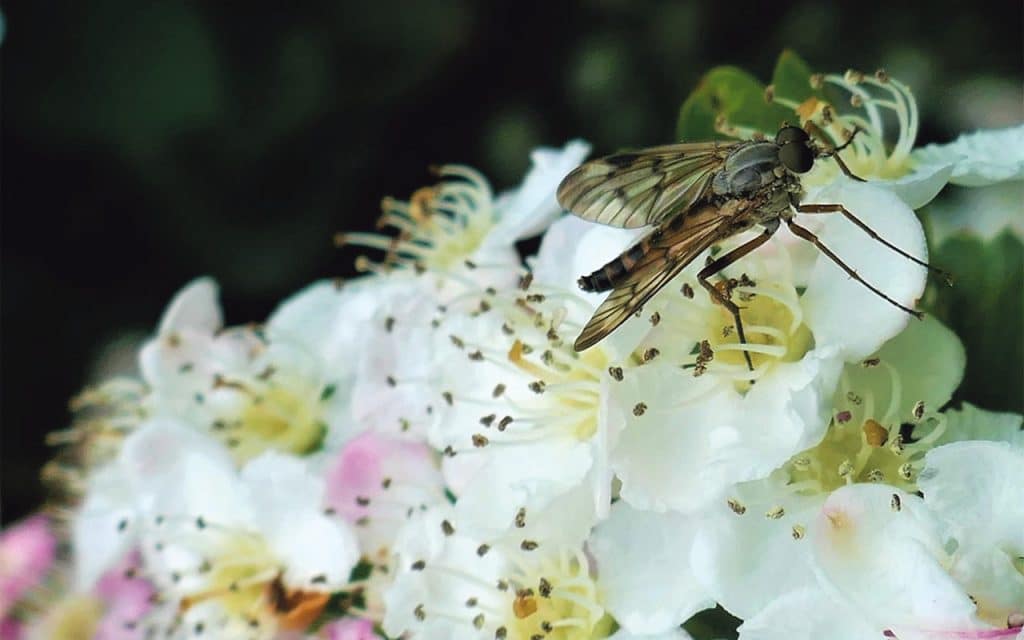At a meeting of Cork County Council, on Monday, July 22, a surprising motion was passed to ask the government to review its application of the wildlife act with regards to verge/hedge cutting and maintenance of footpaths. Only the Social Democrats voted against the motion. Fiona Hayes writes on the importance of this national asset, our hedgerows, and shares why lifting the hedge cutting restrictions during the summer months will make very little difference to road safety.

With the longer days of summer and some good weather, along with many others, I have found myself regularly heading into the country lanes of West Cork on my bike or on foot. The hedgerows are stunning at this time of year. The foxgloves are dying back but purple Woundwort contrasts with white or pink Saxifrage, sweet smelling Valerian and brilliant orange Montbretia. Red and pink Fuchsia dangle their delicate petals, a myriad of tiny bells that are irresistible to bees and other pollinators.
Hedgerows, estimated to cover almost three times the area of land covered by native woodland in Ireland, are arguably one of our most vital landscape features. They shelter the fields from strong winds and provide shade from the sun. The stabilise the soil mitigating against both flood and drought. They provide an important gene pool for native species of flora and fauna and vital habitat for at least fifty-five species of native birds that nest and rear their young in this abundant, if often unappreciated piece of our landscape. They provide wildlife corridors connecting to scrub woodland and giving vital cover for mammals, including badgers, hedgehogs and stoats, as well as to butterflies and other insects. Indeed, the Cork Biodiversity Action Plan 2009 to 2014 Appendix 1, lists “insensitive or inappropriate roadside, verge and hedgerow management” as a threat to biodiversity
‘Woodlands of Ireland’ define hedgerows as – “Linear strips (4m wide or less) of woody plants with a shrubby growth form, that cover more than 25 per cent of the length of a field or a property boundary, that have been deliberately established or managed. They often have associated banks, walls, ditches (drains) or trees.”
Indeed, hedgerows are made up of a tree layer, a shrub layer containing woody climbers, thorns and tree species that have a shrubby growth, and a ground flora layer with ferns, broad leaved herbaceous plants, grasses and rushes. Once you take a good look at them you see they are teeming with life, hence the Common Agricultural Policy Strategic Plan 2023-2027 lists payment rates for farmers laying new hedgerows.
Many councils in Ireland have carried out hedgerow surveys and The Heritage Council have written a Hedgerow Appraisal System offering guidance on surveying hedgerows, collecting and collating the data.
One little-mentioned advantage of our hedgerows however, is that they are a valuable carbon sink. With the EU aiming to be climate neutral by 2050, there is pressure on farmers to reduce their carbon emissions and manage the land to improve the carbon sequestration. With this climate target, adequately maintaining healthy hedgerows becomes central to Climate Change policy.
Despite being such an important carbon sink, hedgerows are not included in national inventory reports. The EPA ‘Farm-Carbon: Hedgerows and Non-forest Woodland (Hedgerow Carbon Project)’ seeks to rectify this by measuring the land use effects of hedgerows on carbon sequestration; and assessing the impact on farming systems and the mitigation of carbon outputs of the average dairy, beef or arable farm system.
This analysis demonstrated how the retention of and planting of hedgerows is vital to Ireland’s climate change policy. After all our hedgerows cover significantly more land area than our native woodland.
Despite all that is documented about the importance of hedgerows, and despite the money so far invested in measuring their value, on Monday July 22, at a meeting of Cork County Council, a motion was passed stating that the council would, “as a matter of urgency, request the department of housing, local government and heritage, to review its application of the wildlife act with regards to verge/hedge cutting and maintenance of footpaths”.
Currently under EU Regulations, cutting of hedgerows is restricted during the summer months, to facilitate nesting birds remaining undisturbed and insects and flowers being plentiful and so providing food for them.
Only the Social Democrats, Isobel Towse and Liam Quade spoke against the motion to remove restrictions on hedge cutting, citing the need to pay attention to both biodiversity and climate change. Nevertheless, the focus of most of the councillors was on road safety; and they agreed amongst themselves that allowing the ferns and grasses on the verges and the hedgerow creepers and shrubs to remain undisturbed during the summer months, whilst it may protect wildlife, especially nesting birds, provides a road safety hazard.
This is a regularly cited opinion and has been debunked several times in the past.
For example, road surveys in counties Tipperary and Donegal published in 2016 found less than one per cent of roadside hedges posed a road safety risk; and “didn’t find enough hedgerows that were a problem to warrant a [full] project”.
In Tipperary, 382.5km of roads that were surveyed tagged only 2.1km as presenting road safety concerns. In Donegal, 1km of 366km of roads surveyed was tagged, indicating that hedges present a hazard on less than one per cent of the total surveyed road length.
“The study group presented by such a low percentage would be too small to allow an accurate and meaningful assessment of targeted local interventions to be undertaken,” the report said.
If the Cork County Councillors want to ensure road safety perhaps they could use surveys and statistics, as did Tipperary and Donegal, to discover where the road safety risk really is.
Legislation currently in place restricts hedge cutting to that required for road safety purposes during the period March 1 to August 31. There is no suggestion that if there is a risk to road safety it cannot be acted upon.
However, if we are serious about mitigating against climate change and protecting species biodiversity, we should be learning how to manage our hedgerows properly, facilitating professional, skilled cutting and trimming outside of the nesting season and surveying and documenting the biodiversity and the carbon sequestering, such that we understand just how valuable this important National Asset really is.


